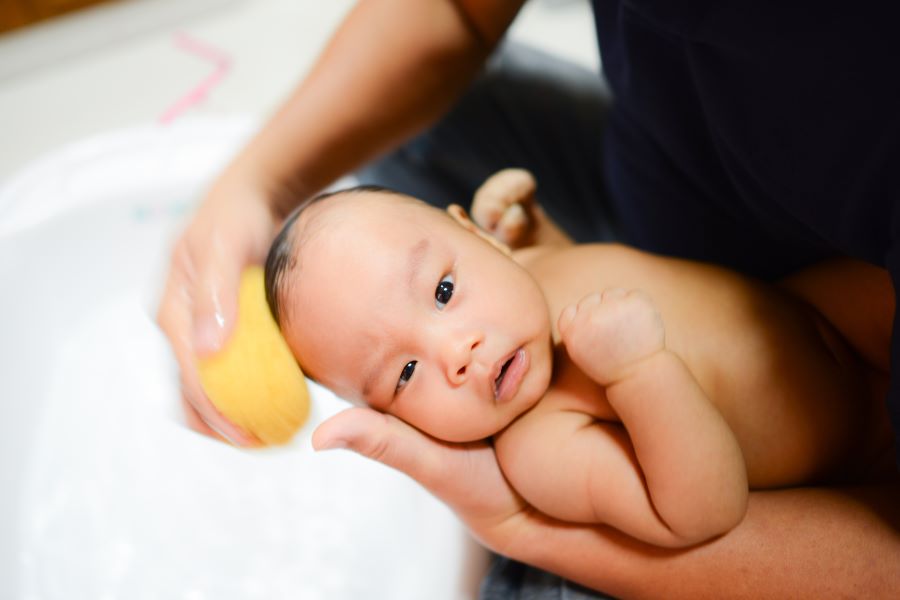Baby’s First Bath

The idea of giving your baby the first bath can be intimidating. It’s only natural at first to be worried about handling a slippery, squirming baby in water. But the process is not complicated, and many newborns enjoy a warm, calming bath.
The American Academy of Pediatrics (AAP) recommends that a baby’s first bath should be a sponge bath, and sponge baths should continue until the umbilical stump falls off.
When it is time for tub baths, make it as easy as you can for both yourself and your baby. Baby tubs that fit inside sinks are ideal. The kitchen sink is a good place, as the counter space is a perfect place to swaddle your baby when bath time is over. Before the bath, lay out all the materials you’ll need: a washcloth, a hooded towel, a cup for rinsing, and a few cotton swabs, if desired. Arrange your materials as close to your reach as you can, because you’ll need to always keep one hand on your baby throughout the bath.
Make sure the room is warm enough, then add warm water to the tub before you place your baby in it. You only need to fill the tub 2-3 inches.
Carefully place baby in the water. Support your baby from behind, cradling the head. Working quickly, gently run a washcloth over baby’s face, cleaning the eyes, nostrils, and corners of the mouth. Wash behind the ears, and use your finger in the washcloth or a cotton swab to clean the outer shell of the ear. Do not use anything to clean inside the ear. Be sure to use a mild dye and fragrance free soap, or use none at all as your baby does not even need it.
As you move down the body, wash under the chin, arms, hands and fingers, torso, legs, and feet. Take care to gently clean between any rolls on your baby’s neck, arms and legs. Lastly, clean the private areas and bottom, washing front-to-back, never back-to-front. If you did use soap or baby wash, be sure to rinse thoroughly. Shampoo the scalp and rinse quickly, taking care not to get soap in the eyes.
After your baby is clean, wrap in a hooded towel. Carefully pat dry—don’t rub—between the fingers and the toes, as well as the larger areas. If you decide to use a lotion, make sure it is also dye and fragrance free. Finally, use a blunt comb or soft brush on the hair to stimulate the scalp and prevent cradle cap.
Sources:
- American Academy of Pediatrics
- Caring for Your Baby and Young Child, Bantam Books, June 1998. Mayo Clinic
- Baby bath basics: A parent’s guide.
Powered by Bundoo®










